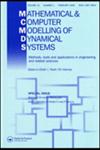Towards optimal control of concentric tube robots in stereotactic neurosurgery
IF 1.8
4区 数学
Q3 COMPUTER SCIENCE, INTERDISCIPLINARY APPLICATIONS
Mathematical and Computer Modelling of Dynamical Systems
Pub Date : 2019-11-02
DOI:10.1080/13873954.2019.1690004
引用次数: 5
Abstract
ABSTRACT We consider the design and control problem of concentric tubes used in stereotactic neurosurgery. The goal is to optimally reach a configuration of the cannula linking an entry point on the skullcap to a pre-specified region inside the brain. Key issues related to this task are the mechanical behaviour of the cannula and the topography of the brain. We formulate an optimal control problem in order to determine a feasible path while minimizing brain damage caused by missing follow-the-leader behaviour. Numerical results show the potential of the proposed approach.立体定向神经外科同心管机器人的最优控制研究
摘要:探讨立体定向神经外科中同心管的设计与控制问题。我们的目标是使套管的结构达到最佳状态,将头盖骨上的入口点连接到大脑内预先指定的区域。与这项任务相关的关键问题是套管的机械行为和大脑的地形。我们制定了一个最优控制问题,以确定一个可行的路径,同时最大限度地减少由于缺少跟随领导行为而造成的脑损伤。数值结果表明了该方法的可行性。
本文章由计算机程序翻译,如有差异,请以英文原文为准。
求助全文
约1分钟内获得全文
求助全文
来源期刊
CiteScore
3.80
自引率
5.30%
发文量
7
审稿时长
>12 weeks
期刊介绍:
Mathematical and Computer Modelling of Dynamical Systems (MCMDS) publishes high quality international research that presents new ideas and approaches in the derivation, simplification, and validation of models and sub-models of relevance to complex (real-world) dynamical systems.
The journal brings together engineers and scientists working in different areas of application and/or theory where researchers can learn about recent developments across engineering, environmental systems, and biotechnology amongst other fields. As MCMDS covers a wide range of application areas, papers aim to be accessible to readers who are not necessarily experts in the specific area of application.
MCMDS welcomes original articles on a range of topics including:
-methods of modelling and simulation-
automation of modelling-
qualitative and modular modelling-
data-based and learning-based modelling-
uncertainties and the effects of modelling errors on system performance-
application of modelling to complex real-world systems.

 求助内容:
求助内容: 应助结果提醒方式:
应助结果提醒方式:


